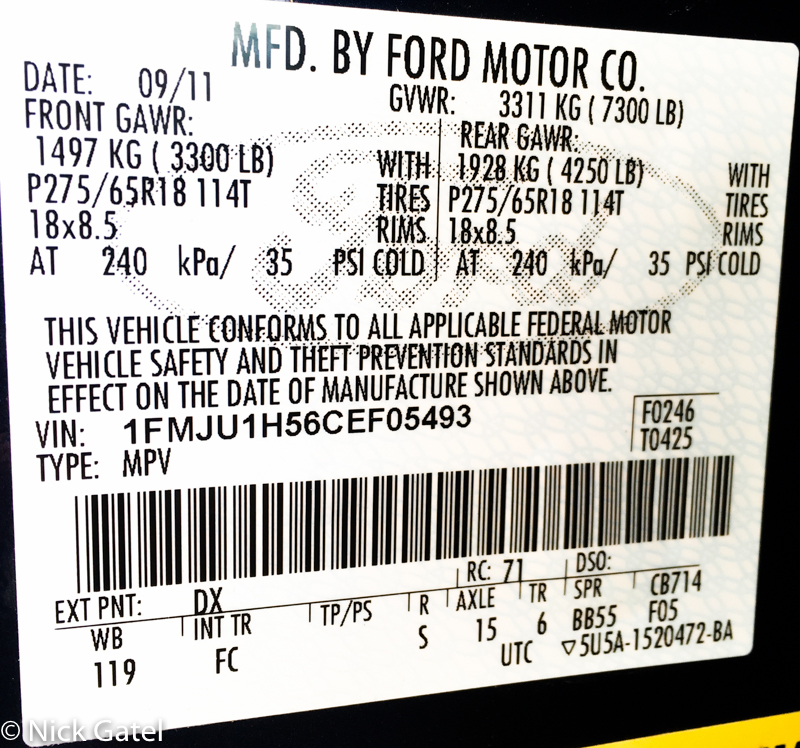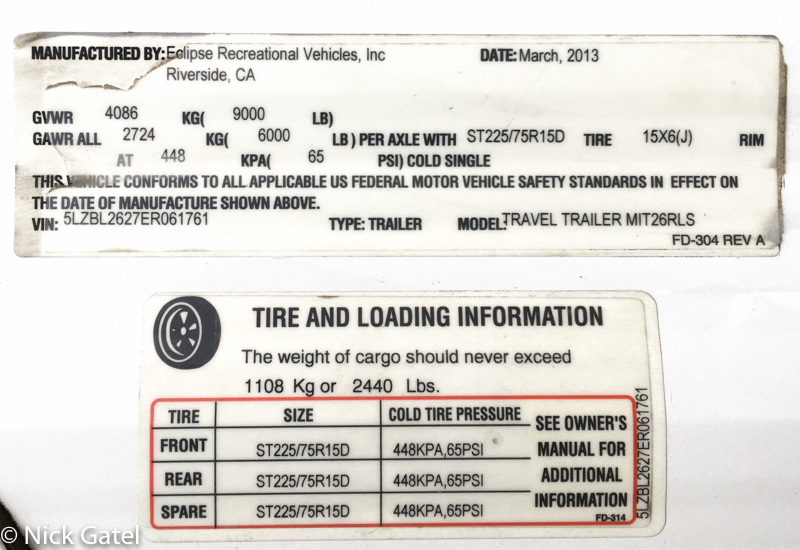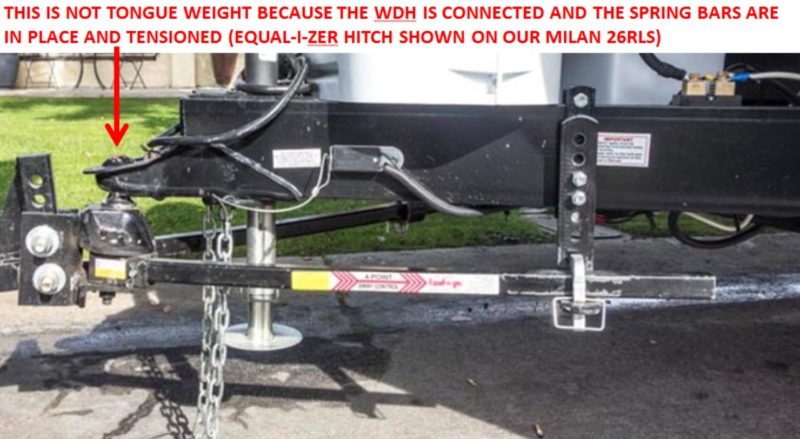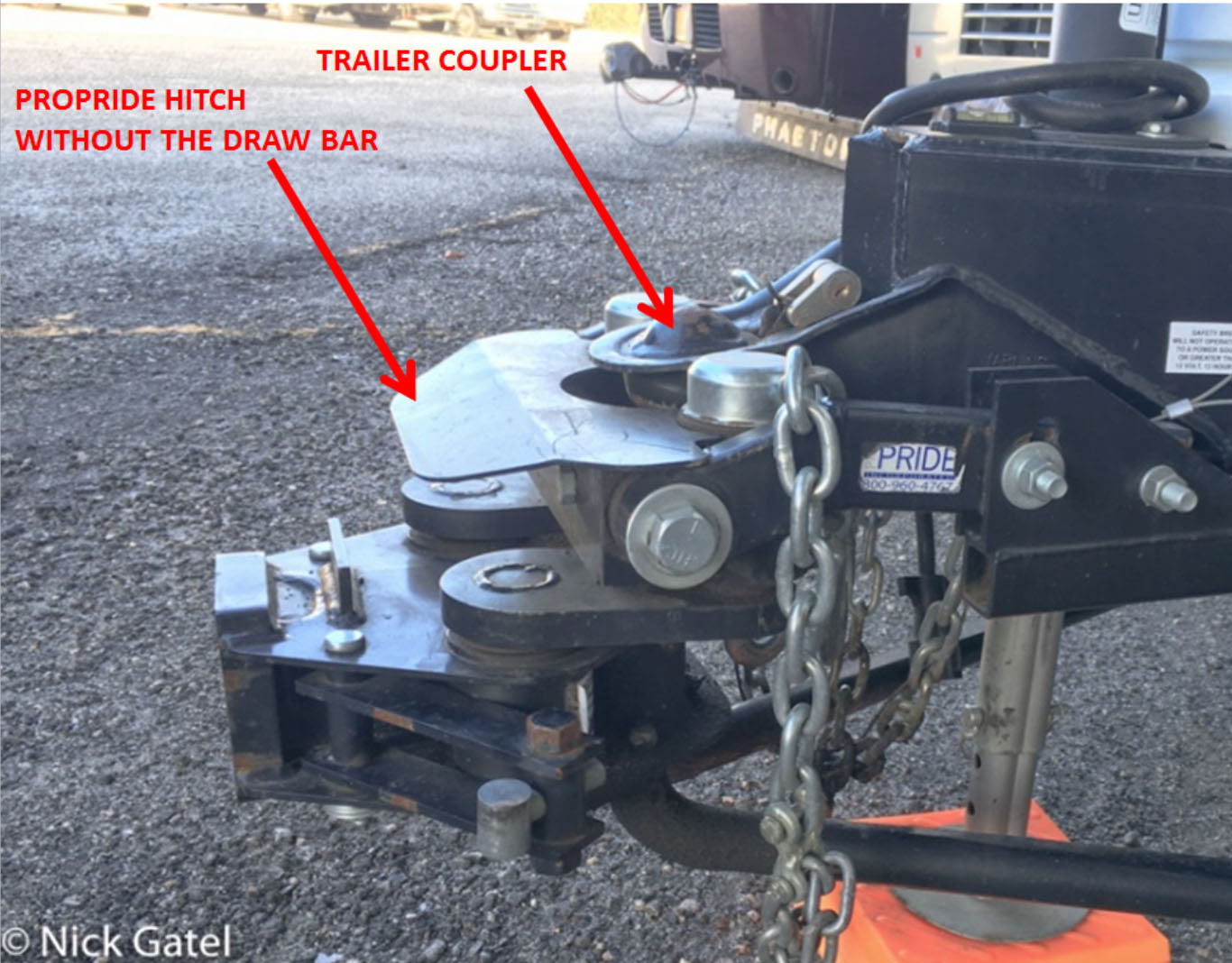The short answer is, No.
Often trying to find detailed information on trailer towing is difficult at best.
When we bought our current trailer and tow vehicle I knew that we would be close to the maximum capacity specifications for both. Most of the self-proclaimed or perceived experts would say buy a bigger tow vehicle if you are going to be close to the tow vehicle’s maximum specification for gross trailer weight and/or tongue weight. In other words, “buy a bigger gun.”
I am not a hunter and I have never hunted. But I know you don’t hunt elk with a pocket knife (too small) or a rocket propelled grenade (too big). You use a rifle with the correct caliber of bullet and other attributes that combined are a match for taking an elk. And so it is with our tow vehicle. The manufacturer (Ford) says we can safely tow a trailer that weighs up to 9,200 lbs fully loaded as long as the tongue weight is between 10% and 15% of the trailer’s weight and the tongue weight doesn’t exceed 920 lbs using a weight distribution hitch also known as a WDH, and at the same time the tow vehicle cannot exceed the Gross Vehicle Weight Rating, or any Gross Axle Weight Ratings, and the Combined Gross Vehicle Weight.
But the question I had was whether or not tongue weight included the 100 lb. weight of the Equal-i-zer weight distribution hitch I purchased with the trailer, and then later the weight of our current ProPride hitch. In the beginning I thought I knew the answer was no, the hitch weight is not added to the tongue weight, but somehow I forgot that and started adding it. So as other like-minded people do, I started doing research to clear my cloudy and now confused brain. And I finally found the answer, which I will share and explain.
A big problem with Internet forums, blogs, website articles, and all things Internet is much of it is opinion. And as the saying goes, “opinions are like assholes, everyone has one.” On the other hand, these so-called informational sources often will lead us to the actual answer, if we search diligently. So I want to present what I have learned using diligent research.
So Let’s Start at the Beginning
To safely tow a trailer there are several capacity specifications that must be complied with. It is important that not even one of these specs is exceeded. If you stay within all the specs determined by both the tow vehicle manufacturer and the trailer manufacturer you will be able to safely tow your trailer. These specifications include:
- Total weight of the vehicle with the trailer attached
- Total weight of each tow vehicle axle with the trailer attached
- Adjusting the weight distribution spring bars according to the tow vehicle manufacturer’s procedure
- Total weight of the trailer when it is disconnected from the tow vehicle
- Weight of the trailer’s axle(s)
- Weight of the trailer’s tongue (coupler)
- The total combined weight of the tow vehicle and trailer, as specified by the tow vehicle manufacturer
So let’s start at the beginning and use my 2012 Ford Expedition as an example. The Owner’s Manual, Towing Guide, and labels attached to the vehicle provide the needed information.
From the Towing Guide
Our Expedition is the 4X2, has the 3.31 axle, and the Heavy Duty Tow Package. The Maximum Loaded Trailer Weight we can tow is 9,200 lbs using a weight distributing hitch.
From the Owner’s Manual
This shows the Maximum Trailer Weight for a Weight Carrying Hitch is 6,000 lbs with a Maximum Tongue Weight of 600 lbs.
The Maximum Trailer Weight with a Weight Distribution Hitch is 9,200 lbs with a Maximum Tongue Weight of 920 lbs.
Vehicle Weight Decal
This shows the maximum Gross Axle Weight limits of 3,300 lbs for the front axle and 4,250 lbs for the rear, which combined is 7,550 lbs. However, note that the Gross Vehicle Weight Rating is 7,300 lbs, which is less than the sum of the axles. This is accurate because the max weight is dependent on the frame, engine, transmission, brakes, etc. If one axle is at its max then you cannot load the other axle to its max. To be honest with you, I recently noticed that GVWR is less than the sum of the axles, and some of my previous posts on weight are inaccurate because I didn’t know this.
Now the GVWR of the Expedition is 7,300 lbs and the Maximum Trailer Weight is 9,200 lbs, which added together is 16,500 lbs. But Ford’s Combined Gross Vehicle Weight Rating is 15,000 lbs. We need to keep in mind that part of the 9,200 Maximum Trailer Weight is carried by the Tow Vehicle, not the trailer, which is the Tongue Weight. But even if we calculated the combined towing weight with the maximum capacity and a tongue weight of 920 lbs the Combined Gross Vehicle Weight would be 15,580 lbs, which is 580 lbs over Ford’s CGVWR of 15,000 lbs. Ford is telling us you cannot tow with the Expedition at its maximum and at the same time tow a trailer rated at Ford’s Maximum Trailer Weight Rating.
Confusing, isn’t it?
This chart I created might help:
Here is the Trailer’s Weight Capacity Decal
Maximum Trailer Weight (GVWR) is 9,000 lbs, which is 200 lbs less than what the Expedition can tow. It has two axles that combined are rated at 6,000 lbs each or 12,000 lbs, but that exceeds the Maximum Trailer Weight rating (which is a good thing IMO). Also the original tires, ST225/75R15D, are only up to 10,160 lbs, which is still more that the GVWR of 9,000 lbs. So 9,000 lbs is the maximum — always go with the trailer manufacturer’s specification for Maximum Trailer Weight.
There is no specification for max tongue weight on the decal, but the coupler is stamped with 1,250 lbs and that is way, way more than I will load it.
My Senior Moment
Okay, I’m 66 now and the memory isn’t what it used to be. Misplacing my morning coffee isn’t a big deal, I just get another cup and fill it up. Likewise, I often misplace my phone, but that is a good thing because the damn device can’t bother me if I can’t hear it ring. At one time I knew what tongue weight was, but I had a “senior moment” when I read the decal on the Expedition’s hitch receiver.
At this point somehow 920 lbs Max Tongue Weight for a Weight Distributing Hitch got translated and deposited into my greying brain as the max weight the receiver could carry. This was reinforced by many people on the Internet, so called experts, who wrote the same thing. I wasn’t interested in the Weight Carrying limits because I don’t plan on towing anything with this type of hitch.
Weight Carrying versus Weight Distribution Hitch


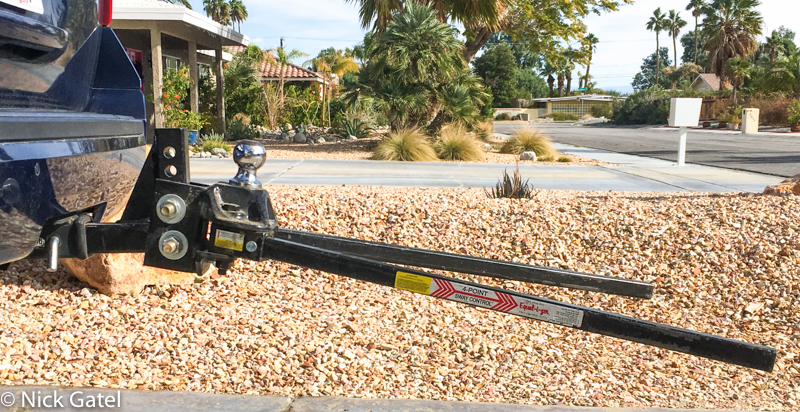
I don’t know how much the Weight Carrying Hitch weighs, but the Equalizer is right around 100 lbs. In addition there are two brackets that are permanently bolted to the trailer’s frame and they don’t weigh much.
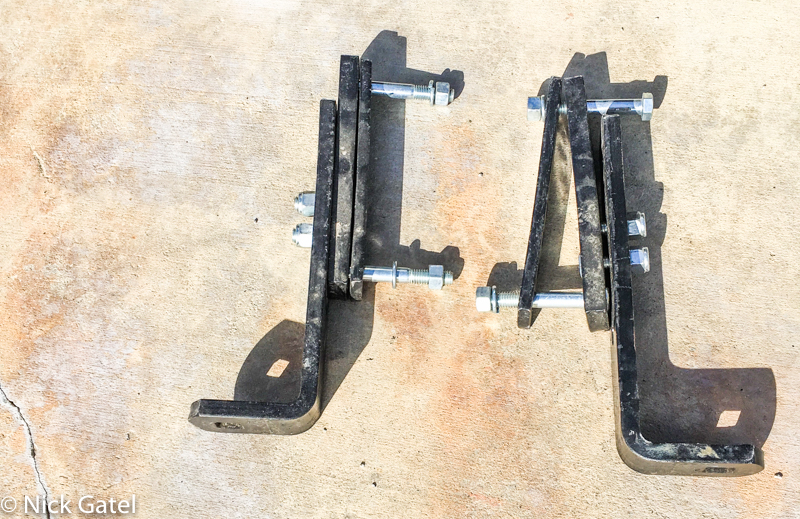
V-5 (aka known as VESA-5)
No, V-5 isn’t some sort of German Rocket. While working with my hitch components I noticed the following references to V-5 and VESA-5:
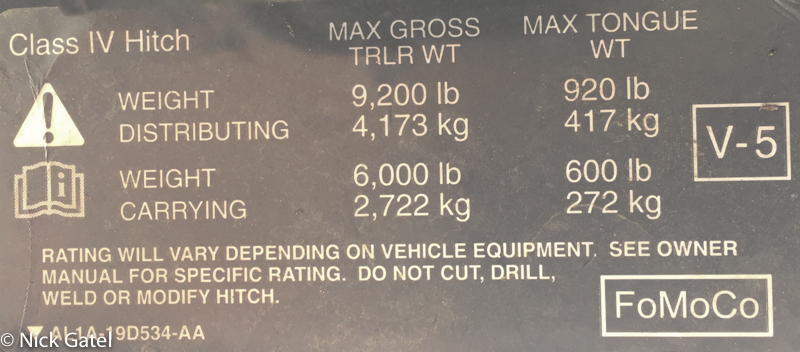
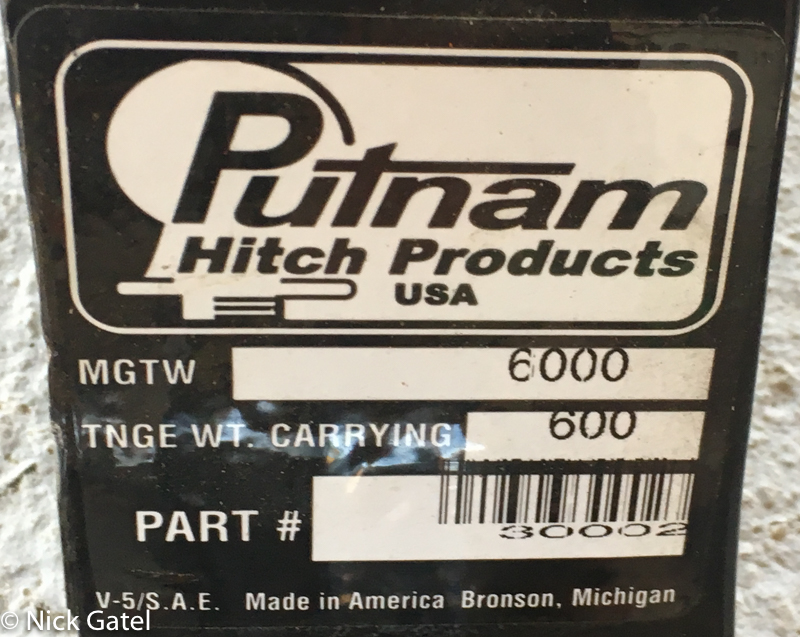

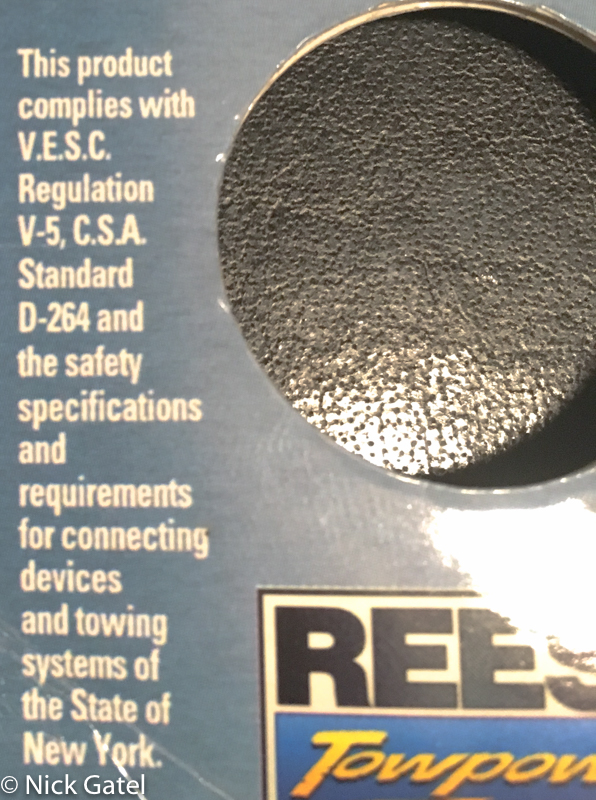
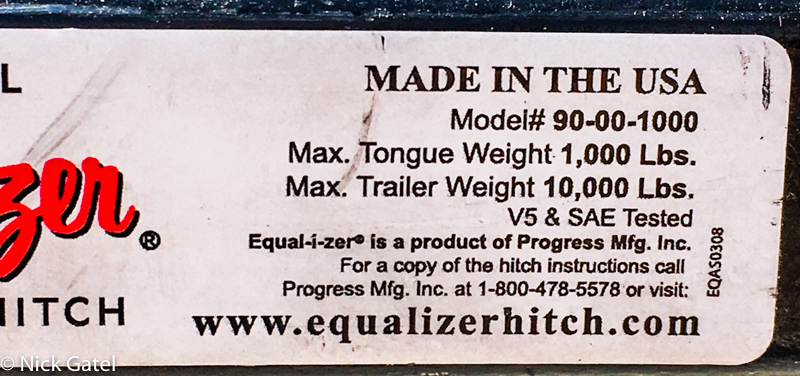
So what is VESA-5 or V-5?
It is an acronym for Vehicle Equipment Safety Commission Regulation VESC-5 that sets the
“minimum requirements for motor vehicle connecting devices and towing methods.”
This is the document and testing standard used by vehicle manufacturers, hitch manufacturers, coupler and trailer manufacturers.
Why is this important?
This regulation defines tongue weight along with everything associated with tow vehicles and trailers. Here is the section that defines tongue weight:
Section 3.8
“Maximum Vertical Load on Hitch (Tongue Weight” means the vertical downward static force exerted on the hitch by the coupling at the point of connection of coupling and hitch, with weight distribution features or devices, if any, deactivated. Tongue weight is measured at the trailer coupling, with the trailer on a level surface (detached from the hitch), and with trailer consumables and cargo in maximum loaded conditions.
The language is pretty cut and dry – the weight of the hitch is not considered to be part of the tongue weight and is added to the cargo weight of the tow vehicle.
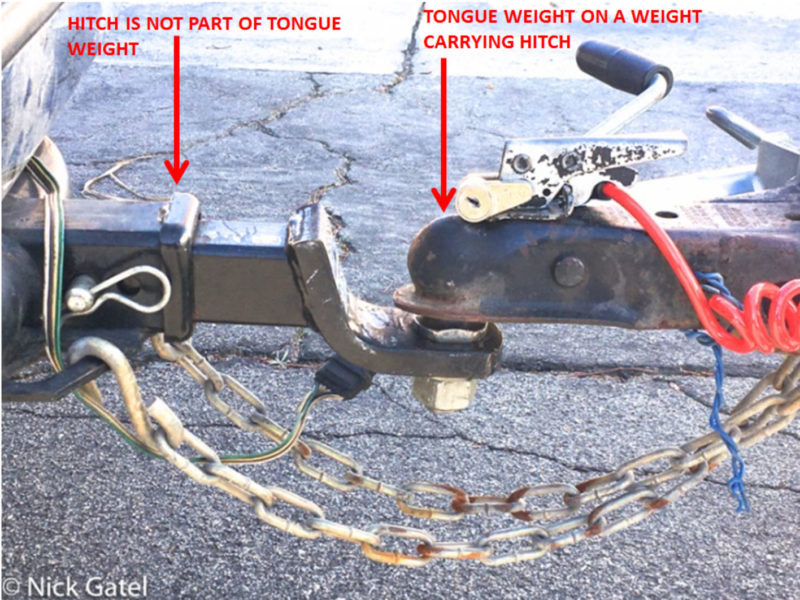
Here are links to VESA-5 and the almost identical SAE 684 (Society of Automotive Engineers, which is an organization that sets industry standards, among other things).
So for my 2012 Ford Expedition, which has a V-5 compliant hitch receiver rated at a maximum tongue weight of 920 lbs, the weight of the Equal-i-zer hitch is added to the cargo weight of the vehicle. In other words, when determining the weight of the tow vehicle, the hitch should be included as cargo weight. It also means that the receiver is designed to carry 1020 lbs (the max tongue weight, plus the hitch weight). Keep in mind that most weight distributing hitches weigh around 100 lbs.
This is important because when I set up the Equal-i-zer I had the weight of the tongue plus the hitch right around 900 lbs, with a total weight of the trailer at 8,500 lbs. In my mind, the tongue weight was 10.5% (900/8,500) but in reality it was 9.4% (800/8,500) and was too low.

The best way to weigh the tongue I have found is the Sherline Scale.

Hensley and ProPride Hitches
Disclosure: I am going to interpret VESA-5 for my own needs, using my own logic. I cannot guarantee the information is correct or that you will not die in a fatal accident if you do what I am doing.
I used a 6,000 lb Equal-i-zer on our 2006 Niagara Tent Trailer and was thrilled with its performance. I wasn’t happy with the Equal-i-zer towing our Milan travel trailer. I’m sure part of the reason was due to the tongue weight of 9.4% being below the specifications of 10% – 15%, which was specified by Ford, Equal-i-zer, and the Milan’s manufacturer. However, even if I upped the tongue weight to 920 lbs. or 10.8% I wouldn’t have been happy. This is because the Equal-i-zer also controls trailer sway — meaning that when wind or a passing big rig passes you, the trailer will sway and the Equal-i-zer and similar weight distribution hitches will, at that point, attempt to control the sway. Trailer sway can potentially become a devastating problem, and when a trailer starts to sway it happens so quickly that given the right set of circumstances it can become deadly. The ProPride hitch I bought is different. It eliminates trailer sway. A trailer cannot sway when the ProPride or the similar Hensley is used.
Projection Point Trailer Hitch
Two companies make this type of hitch; The Hensley Manufacturing Company and ProPride who makes an improved version of the Hensley Arrow. Both hitches were designed by Jim Hensley. For the story, you can read about it here: The Jim Hensley Hitch Story.
I bought a ProPride 3 years ago.
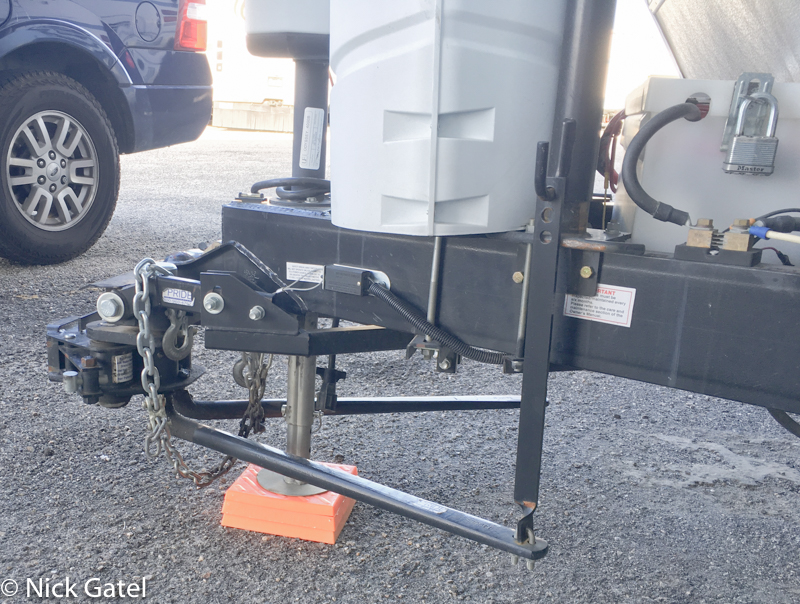

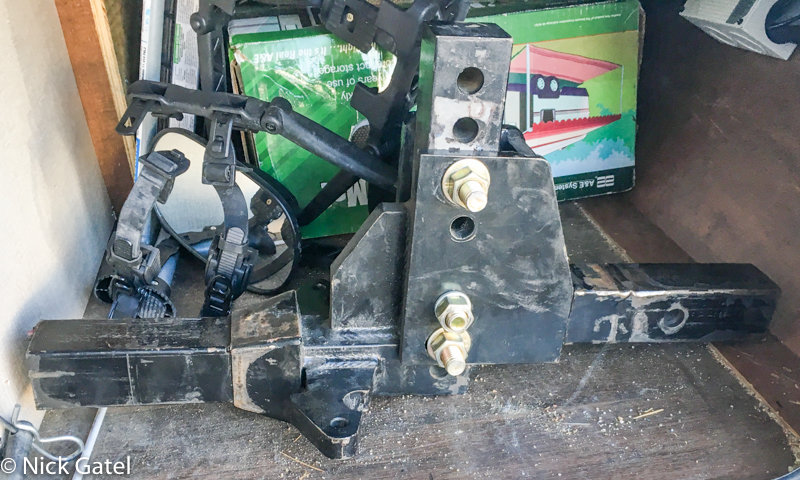

Since the ProPride hitch weighs almost 200 lbs and it is a weight distributing hitch, then according to the VESA-5 Regulation I can attach a 920 lb. tongue weight to it and tow with my Expedition, which would mean 1,120 lbs would be carried by the Expedition’s receiver.
Well, no I can’t.
The truck manufacturers design their vehicles and comply with V-5 assuming a “standard” WDH. The most common WDHs are made by Reese and Equal-i-zer and weigh around 100 lbs versus almost 200 lbs for the ProPride.
One thing I did, using my contacts in the automotive industry, was contact some engineers at three companies to see if I could get specific information on the testing procedure and what weights they used for a WDH. As I expected, I didn’t get any real answers and was referred to check the Owner’s Manual or contact one of their dealers. This is pretty standard, given the influence of their legal departments. None was familiar with the Hensley or the ProPride and that didn’t surprise me either. I suspect the total number of both hitches combined that are in use is more than likely under 10,000 units versus the millions of new trucks and SUVs that are sold each year in the US.
But as discussed earlier, I have determined that my receiver and vehicle are rated to carry 1020 lbs with the weight of the hitch and the tongue combined. So I allocate 100 lbs of the hitch to the tow vehicle capacity and the other 100 lbs. to the tongue weight. Since the ProPride doesn’t work anything like a conventional WDH the design can be added to the tongue weight. This is my conclusion and it works out well when towing our Milan travel trailer.
I have driven in some pretty severe winds without incident using the ProPride. Our Expedition has a system called AdvanceTrac® with Roll Stability Control™ (RSC®) that also includes trailer sway control (note: the sway control does not eliminate sway, it tries to mitigate it if the computer detects trailer sway is affecting the vehicle). This system has been activated 3 times while towing, and each time I was rounding a curve a little faster than I should have. The Owner’s Manual warns that if a turn is taken too fast the sway control will activate. When actual excessive trailer sway occurs the system, utilizing AdvanceTrac® and RSC®, will activate “and help reduce trailer sway by applying brake force at individual wheels and, if necessary, by reducing engine speed.” With the ProPride, I am not going to have sway.
Some Closing Thoughts
Calculating what you can really tow and how much the tow vehicle can really weigh seems like a daunting task. But the information needed is readily available. In addition, take this into consideration using our Expedition as an example. You cannot tow if the tow vehicle is maxed out in weight and the trailer is also at max weight at the same time.
If we drive our Expedition at its Max Weight and the Trailer at its Max Weight, the combined weight would be 15,580 lbs or 580 lbs more than the Combined Gross Vehicle Weight Rating.
The last time I weighed our set up, which was last September on long camping trip, this is what it looked like
Of you can just skip all of this and spend a lot of extra money and buy a tow vehicle that is much larger than you need. The choice is up to you.
For further reading on towing the following are articles I have written in the past:
A three part series titled, How Much Trailer Can You Tow? Part 1, Part 2, Part 3
ProPride 1,000 mile update, 4,000 mile update, 6,000 mile update, 10,000 mile update
Tire Pressure Secrets for Campers, Trailer, and Tow Vehicles
This website may be compensated for linking to other sites for sales of products. As an Amazon Associate I earn a small fee from qualifying purchases at no additional cost to the purchaser.



